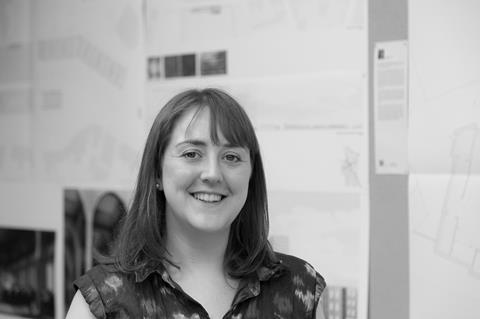Eleanor Jolliffe finds the existential preoccupations of a near decade-old RIBA report to be just as relevant today

In the course of digging around various online building archives for something else I came across a fascinating document by the RIBA’s now defunct think tank ‘Building Futures’ from 2011 entitled ‘The Future for Architects’. This was produced at the height of the last recession - a time at which I was finishing Part I and ultimately failing to get a job in the UK; leading to a year and a bit in a Shanghai architectural practice instead. The report highlighted the difficulties UK practice was facing at the time and pointed towards the route the profession would have to move along to survive until 2025. Nearly 10 years later I was interested to see which predictions seemed like they might be holding water.
It was fascinating to look back at the challenges the profession were facing at the time, to note the in parts hopeful yet often pessimistic outlook; and equally fascinating to see the worries the profession had; some apparently unrealised - the existential threat of outsourcing of architectural services to “large Asian nations”; others startlingly familiar “in the face of a continuing erosion of traditional architectural skills to other players, the profession seems peculiarly vulnerable to a nostalgic backward glance at a bygone age in which the architect was the undisputed boss”.
Reading this report felt like familiar ground - the stresses and strains our profession were feeling in 2011 and arguably still are now are not new
Interestingly “the vast majority of the demand side of the profession” saw design “slipping further down the pecking order in the next 15 years” on the basis that as project complexity increased the need for specialist subcontractor design would become widespread. They saw a future of an architect drawn away from technician designing all the constituent parts of a building, and towards a coordinator/ manager role. This certainly seems to have been an accurate prediction, especially for medium and large scale practices, though it remains to be seen if the impact of the Grenfell inquiry and The Building Safety Bill (undreamt-of of in 2011) will alter re-balance this again. Arguably this new legislation could draw responsibility back to the architect, if the profession and its insurers are willing to take on the risk.
In 2011 ‘the demand side’ questioned whether or not the contemporary architect would want to take on this role, and whether it was better suited to engineers; but also the market at the time questioned the risk the architect was willing to take on agreeing that “whoever carried the risk would drive the design, and so in shying away from taking on risk architects are diminishing their ability to influence design outcomes”. This seems as valid a concern now as it was then.
The report suggests that “In order to survive, the architect must design beyond buildings – and in turn should be supported to do so by regulatory and membership bodies”. I emailed the RIBA to ask how they were currently supporting this and they replied that “The RIBA supports future facing research and thinking that goes beyond traditional models of practice through funds, awards and programmes such as our SMART practice conference and recent RIBAJ Rethink 2025 competition.” I don’t know if this is quite what the report’s authors had in mind - but that is purely speculation on my part.
There is much more in this report that deserves consideration and reflection than I have space for here. One particular conclusion though that I do want to consider a little further is the statement that: “It can sometimes seem that the long shadow of the gentleman architect still hangs over the profession, obscuring the fainter, earlier memory of the master builder. Contemporary society has more interest in the latter than the former”.
I am currently taking a deep dive into the history of the architectural profession for another project (watch this space for a couple of years) – and have recently been reading texts relating to practice from the early Eqyptians and Ancient Greeks through to the Roman Empire. I have just begun to scratch the surface on the later Byzantium and early medieval periods. Reading this report felt like familiar ground - the stresses and strains our profession were feeling in 2011 and arguably still are now are not new. The adaptations the profession has made since ‘the beginning of time’ reflect this balance between ‘educated gentle[person]’ and ‘master builder’ (a tricky phrase in itself). The profession is both of these things and always has been, unless something very unexpected comes up in my research as I read between the early medieval and now.
In each time period a similar set of skills has been required, albeit adapted in a slightly different way. What we faced in 2011, and what we face now is only an existential threat if the defining adaptive and polymath natures of the profession are rejected.
Downloads
The20Future20for20Architects20Full20Report- for dec 2020
PDF, Size 0.81 mb
















3 Readers' comments